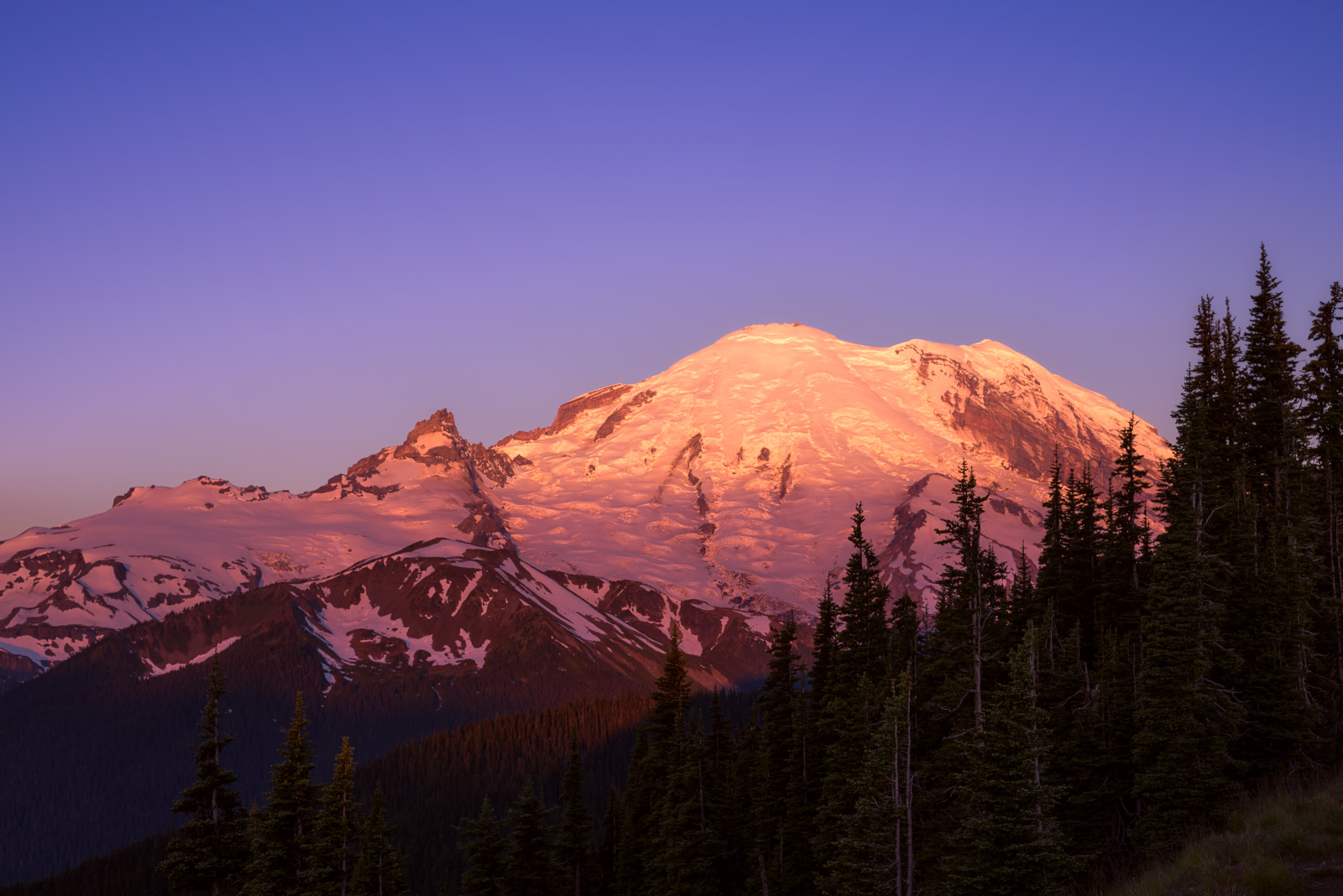One place becoming one of the more iconic shooting locations in Joshua Tree, is The Juniper & Monolith (at Jumbo Rocks Campground). When I went, the Milky Way would potentially be right next to the Juniper after sunset. Sunset would be the time to go then; clouds would mean the sunset picture would be on point and no clouds would mean a killer Milky Way shot.
I got no clouds, so a standard sunset picture was to be. I arrived with buckets of time which was spent fiddling with my tripod and getting the focus right, being as I was so close to the tree. No way I would be able to focus in the dark, so I marked where the lens was in focus at f/16 and didn’t move the camera all night.
Sunset Pic - nice & easy edit!
With a good half hour burned, I proceeded to setup my other camera for a time-lapse, which I’m sure I’ll never get around to editing. I still think I had 30-40 minutes till sunset left so I paced waiting for the show to start. The other side of the monolith did look like a good shot too, with a sun-star and all. I took a crappy picture with my cell phone (no way I was gonna move my dslr now) but it did look much better in person (for next time maybe).
Sunset came and went, burning red skies and all. My camera wasn’t pointed there, so I just enjoyed the show. Then it started to get dark and it was time to get what I came for.
There are a couple of ways you can take the shot with the stars. First, you have to deal with the focus distance. I had the camera way too close to get the tree and infinity both in focus. I could either focus stack or back the camera away, to get everything in focus. I chose to go with a focus stack, with one exposure at f/16 focused at the juniper and another at infinity focused at the stars. The composition was way better but it did have the drawback of a very complicated edit afterwards.
Now that the focus distance was sorted I could deal with the lighting of the juniper and the monolith. I had three choices; take an image at blue hour, take a long exposure with the ambient light at twilight, or light-paint it. I chose light-painting at blue hour, which I really shouldn’t have done - it made merging the two exposures in Photoshop a big pain in the ass.
With a bright blue hour foreground and added light from the light-painting, adding the Milky Way when it was completely dark looked just too unrealistic. I ended up having to use a Milky Way shot that I took at the tail end of blue hour, with a lot of the color still in the sky but a much less visible galaxy.
Big lesson learned though; either take a long exposure blue hour shot to merge with a blue hour sky, or take a light-painted shot past astronomical twilight under similar ISO setting as the other shot you want to merge it with. I did take a light painted shot when it was dark but for some reason I took a way too underexposed one compared with the Milky Way shot - no way those two where going to be merged successfully.
So I did more or less get the image I wanted. I did spend a lot of time deciding what images to merge and then going in meticulously with a paintbrush to paint in the layer mask. I went through the whole sound and dance with a focus stacked image in Cholla Gardens too. It’s gonna be a long time before I take a focus stack image again! Starting to get jealous of those in-camera photographers, with their bags of filters and easy Lightroom edits.
Final Image of The Juniper, Monolith & Milky Way.












